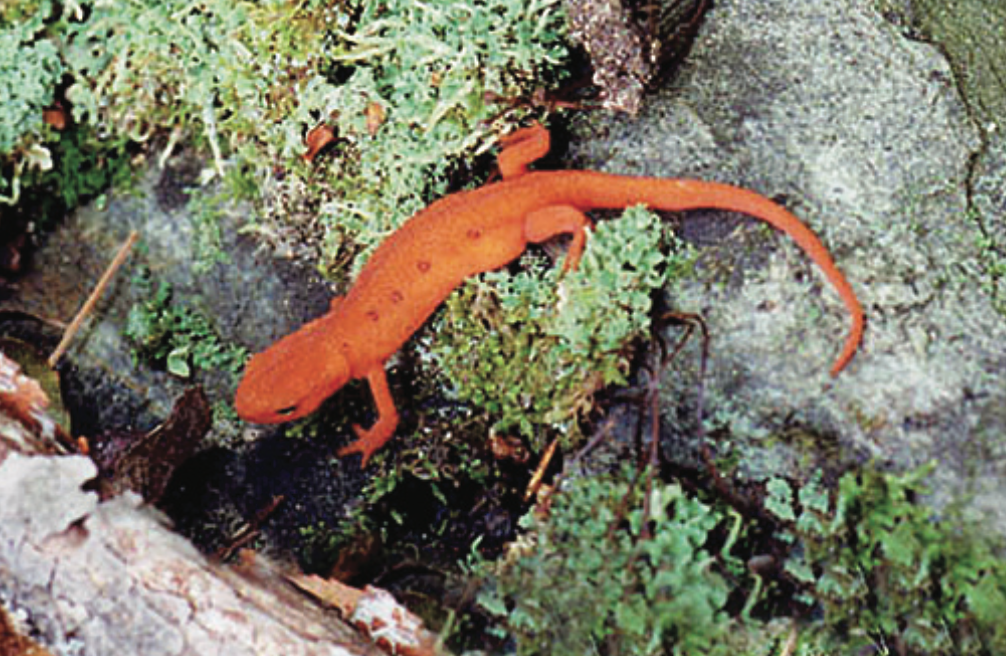 Biologist Nathan Mineo
Biologist Nathan Mineo
Did You Know...?
Eastern Red-spotted Newt Can Navigate
Written by Nathan Mineo
Reprinted from the 2011 Cape Ann Vernal Pond Team Newsletter
Photograph by Cheryl Briscoe
Di
d you know that eastern red-spotted newts never have to stop and ask for directions? This is because they
can’t get lost. You’re probably thinking to yourself, “Why, do they have some sort of built in compass or something?” Yes and better! Not only can
newts detect magnetic north, they can, in a sense, “see” the magnetic field of the Earth. That gives newts the ability to orient themselves (as if with a compass) and the ability to determine their geographic position (as if on a map).
Scientists have done some pretty fun experiments with newts, trying to mess around with their ability to orientate and home. Most of the experiments involve subjecting the newts to various light conditions (short waves, long waves, no light, full light). One experiment even filtered certain wavelengths of light by gluing blue caps on the heads of some newts! The point of all these experiments was to figure out what mechanism enables the newts to navigate. The conclusions, as you might expect, are rather complicated and still aren’t fully understood.

As it turns out,
light plays a large role in the newt's detection
of the magnetic field. In fact, the newt’s compass is, in part, light-dependent. Newts have
extraocular photoreceptors
(regions of the brain that receive certain wavelengths of light), which mediate their magnetic compass response. It’s proposed that newts use this complex light-dependent compass combined with a non-light-dependent compass to detect the Earth’s magnetic field and from that form a map with coordinates similar to latitude and longitude, thereby enabling them to know where they are, even if they have been moved, and find their way home. So, simply put, newts NEVER need to ask for directions.
Photograph by Lynne Holton
Multiple sources.